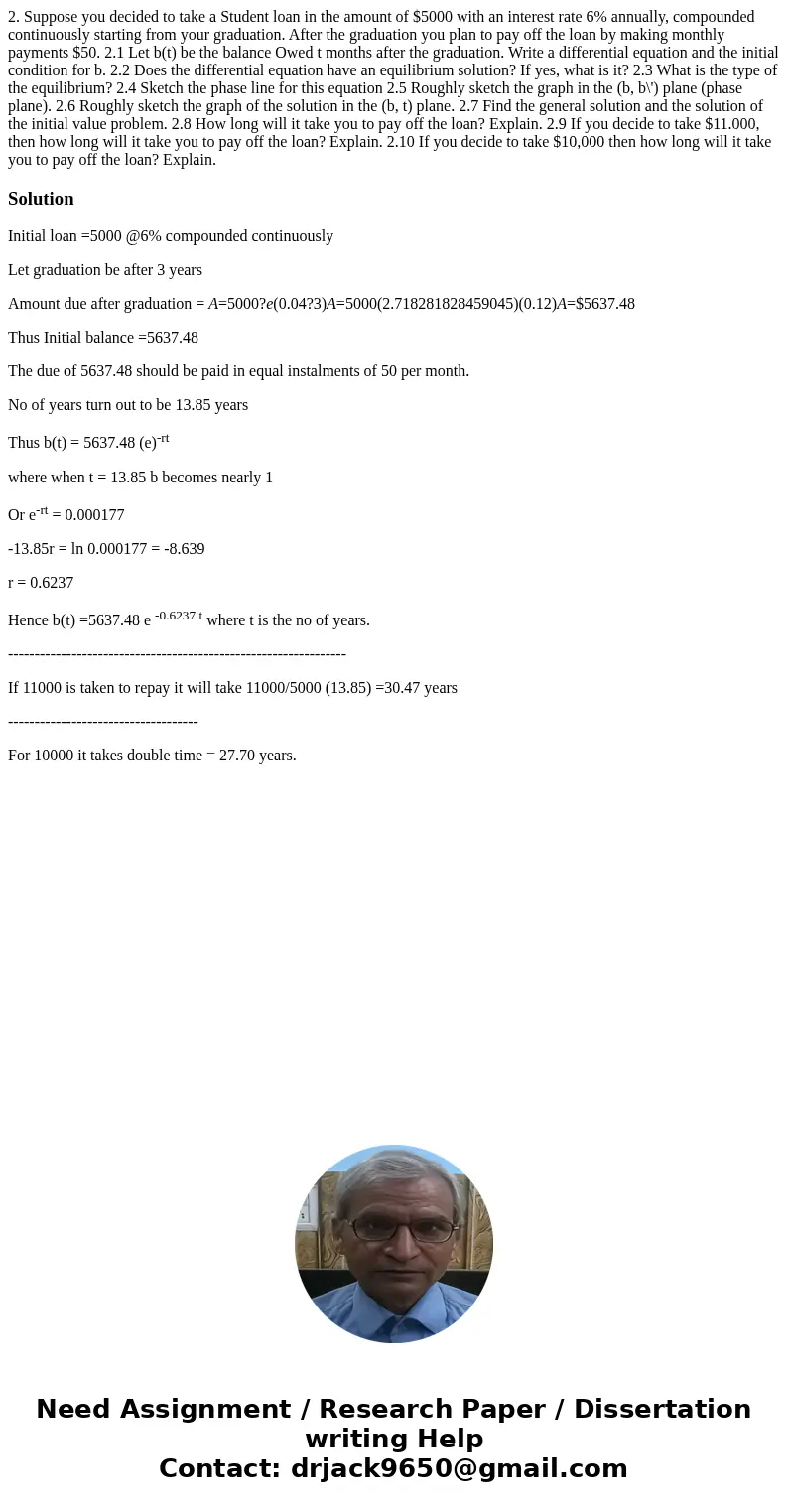2 Suppose you decided to take a Student loan in the amount o
2. Suppose you decided to take a Student loan in the amount of $5000 with an interest rate 6% annually, compounded continuously starting from your graduation. After the graduation you plan to pay off the loan by making monthly payments $50. 2.1 Let b(t) be the balance Owed t months after the graduation. Write a differential equation and the initial condition for b. 2.2 Does the differential equation have an equilibrium solution? If yes, what is it? 2.3 What is the type of the equilibrium? 2.4 Sketch the phase line for this equation 2.5 Roughly sketch the graph in the (b, b\') plane (phase plane). 2.6 Roughly sketch the graph of the solution in the (b, t) plane. 2.7 Find the general solution and the solution of the initial value problem. 2.8 How long will it take you to pay off the loan? Explain. 2.9 If you decide to take $11.000, then how long will it take you to pay off the loan? Explain. 2.10 If you decide to take $10,000 then how long will it take you to pay off the loan? Explain. 
Solution
Initial loan =5000 @6% compounded continuously
Let graduation be after 3 years
Amount due after graduation = A=5000?e(0.04?3)A=5000(2.718281828459045)(0.12)A=$5637.48
Thus Initial balance =5637.48
The due of 5637.48 should be paid in equal instalments of 50 per month.
No of years turn out to be 13.85 years
Thus b(t) = 5637.48 (e)-rt
where when t = 13.85 b becomes nearly 1
Or e-rt = 0.000177
-13.85r = ln 0.000177 = -8.639
r = 0.6237
Hence b(t) =5637.48 e -0.6237 t where t is the no of years.
----------------------------------------------------------------
If 11000 is taken to repay it will take 11000/5000 (13.85) =30.47 years
------------------------------------
For 10000 it takes double time = 27.70 years.

 Homework Sourse
Homework Sourse